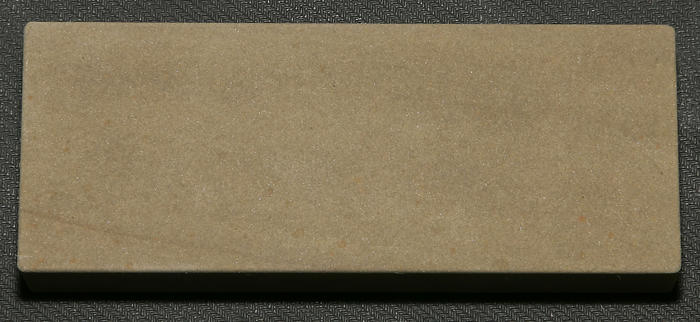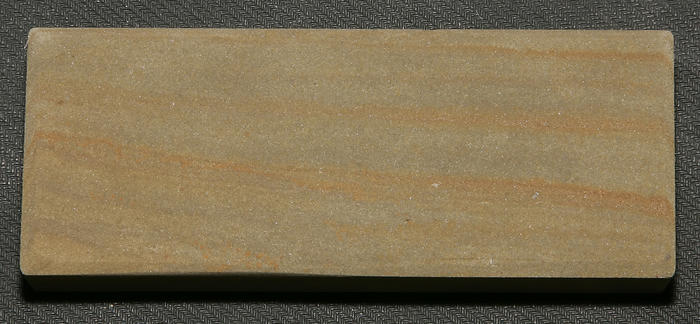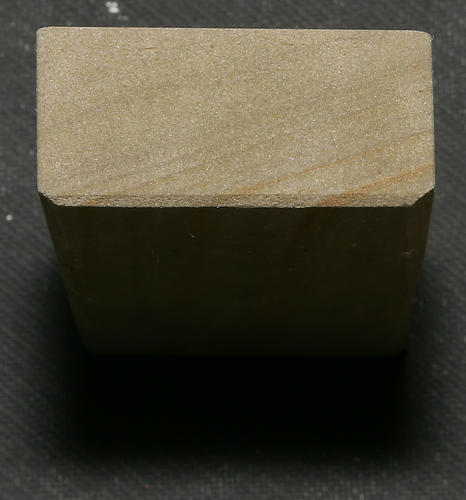Results 41 to 48 of 48
Thread: Ivory Speckled Hone ID?
-
04-08-2015, 12:47 PM #41Senior Member

- Join Date
- Mar 2009
- Posts
- 1,211
Thanked: 202
Yes one of the names for it.
-
04-08-2015, 01:03 PM #42

Iam shure you know that the past 1 1/2 years i did research quite a lot on this topic, shurely not alone and together with others. Actually i just miss the evidence or better said the link to the Canadian Oilstone (The Magog Oilstones) as it was mentioned here to be a layered Stone....or as Vasilis mentioned
"And, I think there are more than one types of Canadian stones with the characteristic Hindostan layered pattern, that could also be fine, like a Hindostan."
So again iam just interested from where this theory comes from, and i do want to provide any misinformation or misinterpretation. Actually the older historic sources mention the following:
"colours, grayish white, fracture, and yellowish brown"
The older Literatur thankfully posted from Martin here on SRP in this Thread
http://straightrazorpalace.com/hones...ilstone-2.html
Up to date i found not other sources (browsing and reading around 200pages) naming a layered structure or pattern.
Thats why is asked if there is any evidence or if the refence was only made due a post concerning a picture of the Canadian Oilstone showing a layering....
which was the post from Vasilis here:
http://straightrazorpalace.com/hones...ml#post1283700
and for shure i read the statements made from Neil:
http://straightrazorpalace.com/hones...ml#post1283726███▓▒░░.RAZORLOVESTONES.░░▒▓███
-
04-08-2015, 05:28 PM #43

Unfortunately, we can't assume that any layered novaculite stone that comes from Canada is a Magog oilstone. The same way, I'm sure that Turkish oilstone in it's majority comes from Crete, and that Grecian stone came from the same quarry the Llyn Idwal stone was extracted. It could very well be true, but since there are no evidence to support that, such as labels, papers from owners of the quarries or the Flyers we every now and then see with prices and description of the stones, everything remains a speculation.
Even on those old books we find and read, part of what is written could be true and part rumors.
Now, finding references in the book and checking their sources is impossible after all these years, THUS a layered Canadian stone is just a layered Canadian stone, unless it has a label. Then, it's a Celebrated Canada oil stone. And when we find a stone with a label that actually has the word Magog on it, then, after some testing by a lot of hone experts, we can be somewhat certain that those two stones come from the same place, and that would be something in the community of HADdicts.
And all that just to remind that not all stones that look like a Hindostan is a Hindostan. On your previous comment, no, I wasn't referring to the Magog thread, nor Hatzicho's stone. I have seen a few Canadian layered stones being sold (the labeled ones, not the seller's comments), and not all of them had the same labels, nor all looked the same. Some darker, some even white, with thin or thick layers, but so far, no Magog.
If anyone has one, please share it with us!
-
04-08-2015, 05:58 PM #44

Thanks Vasilis for your further explanation, because that was that what i expected....
Even we do not know if a labelled Celebrated Canadian Oilstone really comes from Canada ;-) just as an example that you brought up with the Turkey Stone....
Yeah it would be Interesting to see a real piece of Magog which is actually hard to come over because the Island is private property...and the water has rised since the years went by...███▓▒░░.RAZORLOVESTONES.░░▒▓███
-
04-08-2015, 07:04 PM #45
-
04-08-2015, 08:19 PM #46Senior Member

- Join Date
- Sep 2013
- Location
- NW Indiana
- Posts
- 1,060
Thanked: 246
I have a stone that fits in the maybe hindo/maybe canadian stone group. Pics to follow:
Top:

Bottom:

Side:

End:

-
04-08-2015, 10:14 PM #47

Funny thing about the Cretan (Turkish?) oilstone : it was indeed a Turkish oilstone until about 1913. Then Crete became de jure part of Greece.
Another good example for stones that thought to be from elsewhere was at a time the Hindostan stone. The word resembles the Hindustan, Persian for the northern India that was also kind of I guess used in other languages too for the area, dropping its demand. Or so I've read.
eKertz, sorry, I can't help with your stone.
-
04-15-2015, 07:34 AM #48Senior Member

- Join Date
- Sep 2013
- Location
- NW Indiana
- Posts
- 1,060
Thanked: 246
Here is some historical Hindostan info from an old Indiana geological report if anyone is interested:
Hindostan stone from different quarries and from different strata in the same quarry presents considerable variation in physical characters. The best grade of stone,which is called "Washita finish" stone, from its resemblance to the Arkansas Washita stone, has a creamy white color and a hardness of about 3. Most of the other grades of stone are light gray to bluish gray in color and slightly softer than the "Washita finish" stone. Some of the stone called Orange stone has an orange tint. Occasionally the strata are colored with iron to various shades of red. Frequently alternate layers of the stone have different shades of color, giving a prettily banded structure. Sometimes the penetration of the iron laterally from the joint seams results in a banded structure running vertically through the stoneinstead of horizontally. The red stone is not used for whetstones, but many fancy articles are carved from it. In some layers of the stoneiron and manganese are disseminated through it in minute masses, giving it a closely speckled or peppered appearance. Dendrites of manganese sometimes occurs on the surface of the whetstone strata.
Structure.—Thin sections of the strongly marked varieties of the stone have been examined by the microscope. The examination shows the stone to be composed of very fine quartz grains. Some of these are as small as .01 mm. in diameter, while the largest measured was .0325 mm. in diameter. The great bulk of the grains are of a nearly uniform size, averaging about .02 mm. The quartz grains have generally somewhat rounded outlines, though some are distinctly angular. Some scales of mica and occasional small crystals of tourmaline are associated with the quartz grains. A few crystals of zircon and some chlorite occur in the stone.
Small masses of limonite are disseminated through all of the sections. In a slide of "Washita finish" stone from Chaillaux's quarry the iron is distributed among the quartz grains in numerous small brown and black masses. In a slide of the bluish gray Hindostan stone from Moore's quarry the limonite is more abundant, some of it occurring in latheshaped masses ^ mm. in length by .05 mm. in diameter.
Kinds And Uses.—Several different sizes and varieties of whetstones are manufactured. A class of stones intended for carpenter's and bench use is made in two sizes, viz.:
» No. 1 Kegular, 8 x 2 to 2 j x i to 1J inches.
No. 1 Small, 8x2xj to 1 inch.
A white or buff stone with a smaller proportion of earthy matter than the ordinary is branded as " Washita Finish" stone and sold at a slightly higher price than No. 1 Regular.
About one-half dozen different sizes and shapes of small thin stones, with rounded edges, are made and sold under the name of "slips." These are used mainly by carpenters in sharpening gouges, bedding planes and similar instruments.
A considerable number of axe stones 1\ inches square by \ inch thick are manufactured. These are used largely in the pine regions.
The glass-maker's file is a stone 8 inches long by \to £ of an inch square. It is used by glass-makers in finishing glass work, and also for sharpening some kinds of tools.
The hacker stone is about 8 inches in length and of oval form. It is used in the turpentine regions to sharpen the broad-bladed hacker knives with which the incisions are made in the turpentine trees. About 400 gross of this stone and 40 to 50 gross of scythe stones are made annually.
The doctor stone is a large stone 4x4x2 inches in size, used in the calico mills to sharpen "print doctor" knives which are used to remove ink from the cylinders on which calico is printed. From 3,000 to 4,000 pounds of these are manufactured annually. Orange stone is the name given to a variety of the stone having a pale orange color.
A few razor hones are manufactured, nearly all of which are sold to the visitors at French Lick and West Baden Springs.
Besides whetstones, there are a considerable number of fancy articles such as books and paper weights made from the whetstone rock and sold to visitors at the Springs for souvenirs. The banded and colored strata are selected for this purpose. Mr. Gabriel Dougherty, who makes most of these articles, estimates that about $300 worth of them are sold annually.
-


 24Likes
24Likes LinkBack URL
LinkBack URL About LinkBacks
About LinkBacks






 Reply With Quote
Reply With Quote
